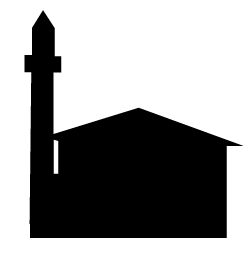Ghorjomi
Ghorjomi Mosque
With five domes and a vast prayer hall, Ghorjomi is the largest wooden mosque in Georgia and the center of an active congregation. The mosque is part of a complex with a recently built madrasa that boards students from across the township. Villagers also replaced the minaret destroyed under Soviet rule and repainted the interior, using the original murals as a guide (although some detail has been lost in the process). Laz master craftsmen Omer Usta and artist Usta Bin Ahmed (who also decorated Dghvani mosque and likely Beghleti) painted the interior, making Ghorjomi not only the region’s largest mosque but also one of its most colorful and richly detailed. The murals of corn and an Ottoman steam sailing ship on the sides of the entrance—nearly identical in design and placement to Dghvani mosque—help to confirm the artists’ authorship. Five domes (one larger central dome framed by four smaller domes) and four coffers fill the ceiling, itself painted a vivid green. To support such a vast interior using the only available local building material (wood), craftsmen hewed massive double-height columns from mature trees and placed one at each corner of the central dome. Rightly proud of their mosque, which is truly a feat of both engineering and artistry, locals have even added a small painting of it above the mihrab, alongside depictions of such holy sites as the Ka’aba and the Zamzam Well.
DISTRICT: Khulo
LOCATION: 41°38'59.2"N 42°18'41.4"E
POPULATION: 95; Greater Ghorjomi 2,813
CONSTRUCTION DATE: 1902 (hijri 1320)
RENOVATION DATE(S): 1989
CRAFTSMEN: Omer Usta, Usta Bin Ahmed (Laz)
MINARET: Yes; Original demolished 1930, rebuilt 1989 (collapsed), rebuilt 2014


